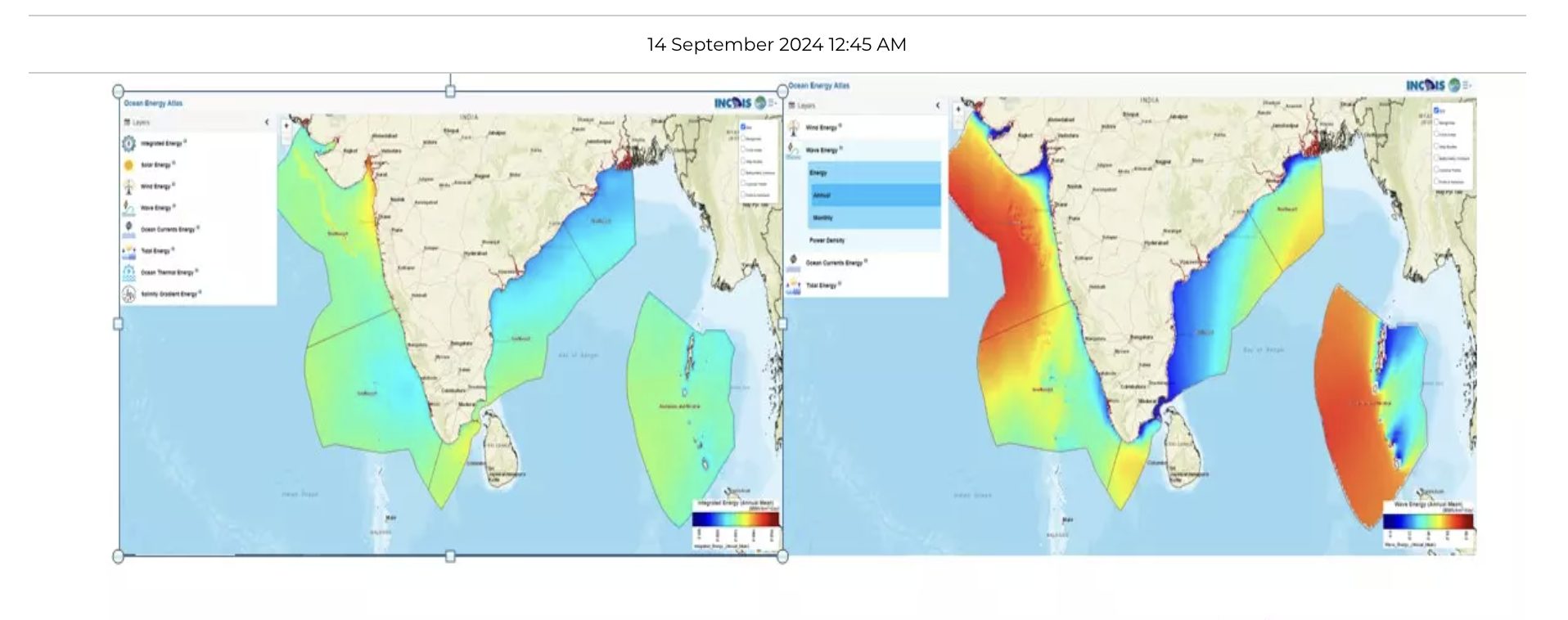Note4Students
From UPSC perspective, the following things are important :
Prelims level: About INCOIS;
Mains level: Blue economy;
Why in the News?
INCOIS unveiled an ‘Integrated Ocean Energy Atlas’ for India’s EEZ, highlighting vast marine energy potential from solar, wind, waves, tides, currents, and thermal resources.
About INCOIS:
|
Key Features of the Integrated Ocean Energy Atlas
- The Atlas encompasses marine meteorological energy sources like solar and wind, and hydrological energy forms such as waves, tides, currents, ocean thermal, and salinity gradients within India’s EEZ.
- It identifies areas with high potential for energy generation and will serve as a reference for policymakers, industry and researchers for harnessing these rich energy resources.
- INCOIS prepared the annual, monthly, and daily energy estimates of ocean energy components that can be visualised through a WebGIS interface at 5 km grid resolution.
Significant potential of the Indian Exclusive Economic Zone (EEZ)
- INCOIS has estimated integrated ocean energy of approximately 9.2 lakh TWh per annum within the EEZ of India.
- The vast coastline of over 7,000 km and the EEZ covering up to 220 km from the coast offers ample scope for generating energy from blue renewable sources like tidal waves, currents, solar and wind.

What India can learn from this Report? (Way forward)
- The Atlas provides a blueprint for India to tap into its vast untapped ocean energy resources to meet its growing energy demands in a sustainable manner.
- It offers estimated values of renewable energy that can be generated from individual or integrated blue renewable sources at potential sites along the coast
- The detailed mapping of energy potential at a granular 5 km grid level can help industries plan and make informed decisions for developing offshore renewable energy projects.
- Collaborating with industrial partners and public sector companies to harness energy at high-potential zones identified in the Atlas can accelerate the adoption of marine energy technologies.
- The Atlas can serve as a model for other countries in the Indian Ocean region to assess their blue energy reserves and promote regional cooperation in harnessing ocean energy resources.
Mains PYQ:
Q Describe the benefits of deriving electric energy from sunlight in contrast to the conventional energy generation. What are the initiatives offered by our government for this purpose? (UPSC IAS/2020)
Get an IAS/IPS ranker as your 1: 1 personal mentor for UPSC 2024
